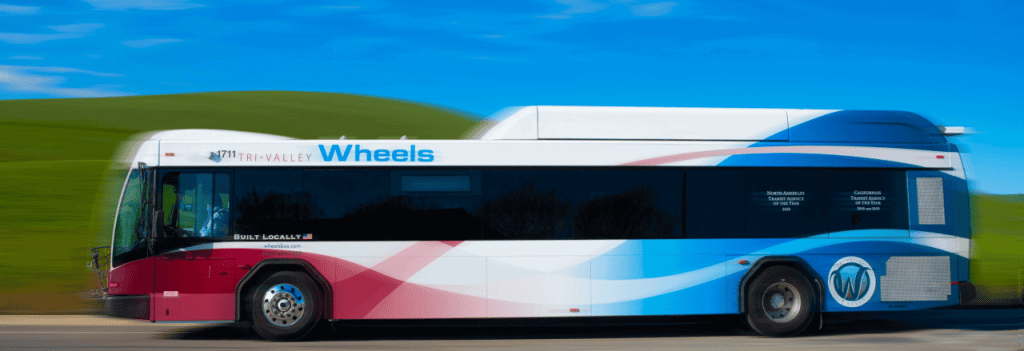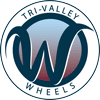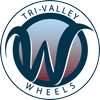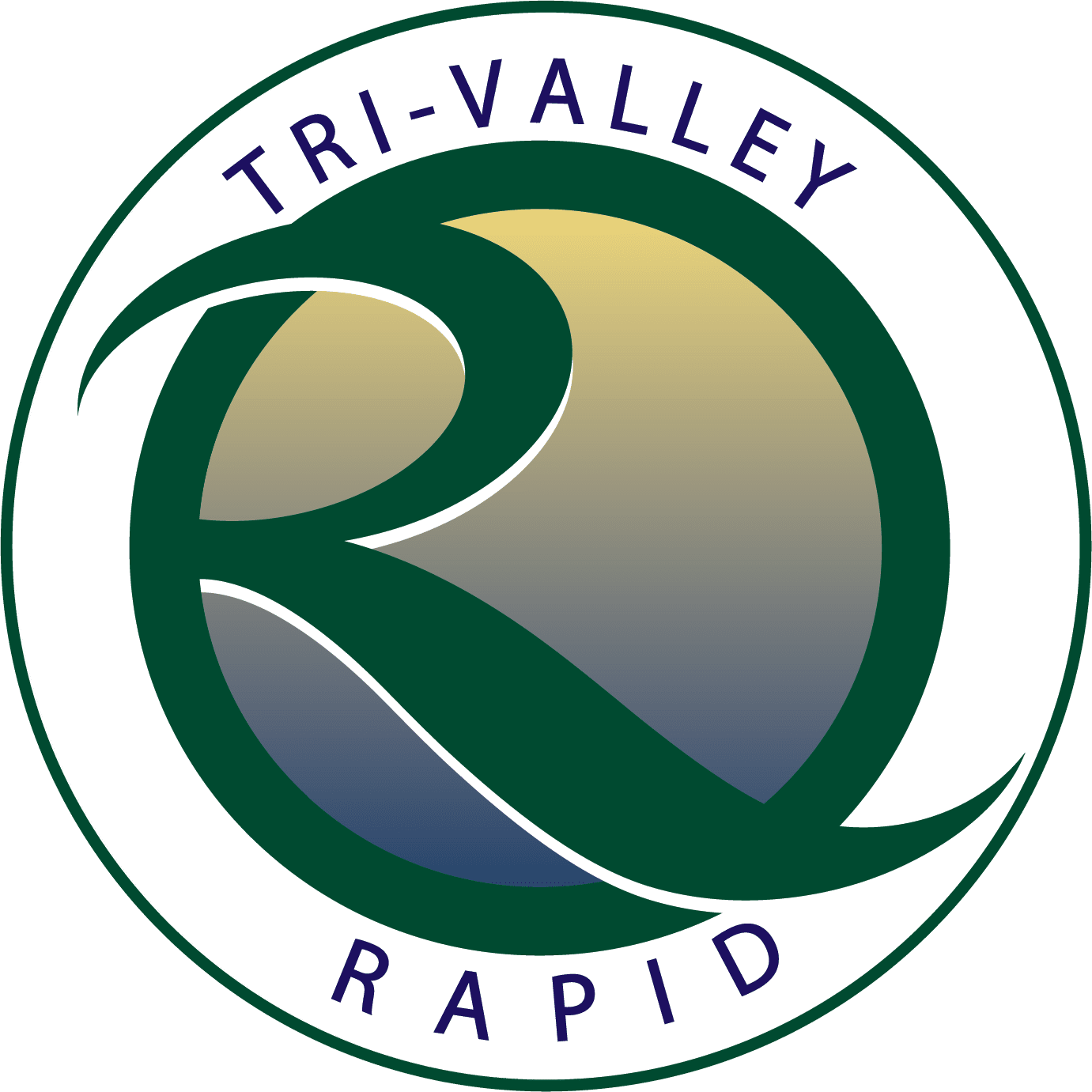
Insights from Executive Director Christy Wegener
With decades of experience and a passion for transit, Christy shares her outlook on the future of Wheels, public transit, and life behind the Wheel at one of California’s most successful transit agencies.
The Big Sync Un-Synced Me
Scheduling is hard.
I spent most of my career managing transit network service planning, cutting my route-scheduling teeth at the Fairfax Connector bus system in Northern Virginia. Trained by the agency’s senior transit planner Jim Carrell, who used xeroxed copies of the Thomas Brothers Guide maps and multi-colored highlighters to conceive routes, I learned the principles and practices of scheduling: clock-face versus irregular headways, balancing running time with the right amount of recovery time, anchoring the schedule to regional transfer hubs, and allowing enough padding for travel time to and from a Metrorail station – typically 7 minutes. Importantly, I learned that a bus schedule can only “serve so many masters.” In other words, a schedule can only reliably connect to a limited number of things and like everything else in life, tradeoffs often must be made along the way.
The Bay Area is a complex system of transit agencies offering services of varying frequencies. This makes it difficult to align systems with one another not only from a service schedule perspective, but also the time of year when our systems’ schedules change. The pandemic hit and overnight, transit frequencies were reduced throughout the Bay Area. For essential workers making regional trips, those reduced frequencies meant that inter-agency connections that were once easy to make were no longer possible. Transit agencies united and responded; data was collected, maps were created, and regional transfer hubs were identified. That collaborative and exhaustive work birthed an effort to align the calendar of our large service changes twice a year in January and August: I give you, The Big Sync.
The Big Sync requires the schedule anchor (BART) to develop and share train schedules six-months in advance so that feeder agencies can carefully schedule their connections. It’s important work that ensures thoughtfulness when crafting schedule adjustments, so we don’t leave our riders stranded when schedules change.
The August 2025 Big Sync happened over August 9-11, and nearly every transit agency throughout the Bay Area changed their service schedules. As I was getting ready to take transit to work from San Ramon that week, I pulled up the County Connection Route 35 schedule and was mortified to see that the Wheels 580X connection I used to have to at Dublin/Pleasanton BART was no longer possible. The new BART blue line train schedule resulted in a timing shift of Route 35 in one direction and the 580X another, and instead of a 7-minute transfer window between buses, I now have a 20 to-30-minute wait and a different Wheels bus to catch. Aggravating, but understandable. When thinking of how to prioritize connections at Dublin/Pleasanton BART, most riders are going to BART; during my commute time, I am the only person walking from Route 35 to Route 580X. The moral of my story is that scheduling is tough, and not all transfer patterns can be accommodated especially when there is a greater transfer hierarchy at play. And even with all the blood, sweat, tears and data that went into The Big Sync, it will never be perfect. There is room for improvement though, and secondary interagency bus transfers should probably be considered in the overall transfer hierarchy… In the case of re-syncing my commute, luckily, I know some people. 🙂


Summer in the Tri-Valley is Here
I can’t believe that we are almost halfway through 2025, and that summer is upon us. As we look forward to the warm summer months full of street festivals, farmer’s markets, special events and a break from school, Wheels is preparing to be the transportation provider for all Tri-Valley summer activities.
>> This summer is the second year that Wheels will provide free rides for all youth riders through our Summer Youth Ride Free promotion. This year Wheels is partnering with our neighboring transit agencies in Contra Costa County to expand the program. It’s an excellent opportunity for our youngest riders to learn what pubic transit has to offer beyond their normal bus route to school. And this year the program can take them to the far reaches of the East Bay.
In Pleasanton, Wheels will be your ride to deep-fried-everything at this year’s Alameda County Fair which begins on Friday, June 13. Wheels provides direct access to the Fairground’s Yellow Gate via Route 52, a special shuttle service connecting to Dublin/Pleasanton BART.
Wheels will modify routes to accommodate and provide service to Downtown Pleasanton’s First Saturdays on Main and the Summer Concert in the Park Series. First Saturdays on Main begin June 7, and Summer Concerts in the Park will start in mid-July. Wheels Route 10R and 8 can get you to both events.
In Dublin, Wheels will provide access to the Army’s 250th birthday party celebration which is taking place on June 14th at Don Biddle Park. Wheels Route 30R will have a temporary stop on Dublin Blvd close to the event, connecting party-goers to both BART stations.
The Dublin summer Farmer’s Market will take place at Emerald Glen Park on Thursdays at 4pm; direct access is provided via Route 2, but Route 30R is a short walk from the park.
In Livermore, Wheels is the Tri-Valley connection to the Livermore Rodeo Parade, taking place in Downtown Livermore on Saturday, June 14. Wheels’ vintage Rideo bus will be proudly on display in the parade.
Wheels also provides a connection to the Thursday night Farmer’s Market at Carnegie Park located on 4th and J Streets in Downtown Livermore. Access to the market is provided via Wheels Route 14, and the closest stop is Fourth Street and L Street.
I hope everyone has a safe and enjoyable summer. Thank you for riding Wheels!
The Work From Home Conumdrum
Working from home and public transit are both generally good for the environment. But are they good for one another?
Transit works when cars don’t. That’s something I heard a few years into my career, and it certainly has been my lived experience, especially recently. When driving is expensive or costly, you will see higher transit ridership. When the opposite is true, you will see lower transit usage. My working definition of costly includes three factors: the actual cost of driving (gas, tolls, parking, congestion pricing), the hidden costs (time spent in traffic, wear and tear), and the regulatory costs (availability of parking, HOV-only restrictions). As driving becomes more costly, vis-à-vis gas prices, congestion, parking or HOV restrictions, you will reach a tipping point in which people will transition from cars to transit. Conversely, if costs decrease over several factors, such as improved congestion, more parking, and cheaper gas prices, commuters may decide the car is king.
In pre-2020 times, the Bay Area’s regional transit systems were experiencing record ridership gains. Congestion into downtown business districts was high five days a week, and parking was expensive and not always available. For many, this created a situation where it was too costly to commute 5 days a week via car, and therefore transit surged.
The Covid-19 pandemic changed all that. It paved a way for less costly driving via permanent work from home schedules, and it’s had a life-altering impact on transit ridership/recovery.
I remember waking up the days after March 17, 2020, after the world had shut down and all non-essentials were told to work from home. The freeways were empty and for those who had to be on the road, life was good, because congestion was gone. After the world reopened in the months following, cars slowly started to fill the roads, but it wasn’t the same volume as before. Concurrently, the tech-heavy industry in the San Francisco Bay Area realized they could fully function with remote work and never looked back. Other major employers, both public and private, began to embrace remote work, and as those employers settled into hybrid in-office schedules, Bay Area transit ridership unsurprisingly didn’t recover.
Should transit go away if there are fewer riders? That’s the threat, as the depressed ridership and loss of passenger fare revenue places many regional agencies in the face of a serious fiscal cliff. There needs to be recognition that work from home has been great for congestion, for reduced greenhouse gas emissions and for work-life balance – but it has knocked the socks off transit ridership so significantly that full recovery is out of reach. But maybe that’s okay, as long as our regional systems aren’t penalized because of the loss of fare revenue and are properly financially supported with dedicated revenue streams so that they can continue to provide a valuable and essential service.
Recently, Governor Newsom announced that he is requiring state employees to report back into the office four days a week beginning in July. Federally, there has been a five-day a week return to office mandate. While I know the return to office is not necessarily popular, my hope is that as folks make their way back to the office, they find their way back to public transit again.


A Time of Gratitude
This is my last blog post for the year and I find myself filled with gratitude. Gratitude for health and happiness; for a job that keeps me on my toes while allowing me to improve the community; and gratitude for the hard-working men and women who keep Wheels running. Reflections on 2024…
- We realigned our bus network to better connect with BART and saw 17% month-over-month ridership gains compared with the previous year. We even surpassed pre-pandemic ridership levels on weekends!
- We formalized our One Seat Ride paratransit program – it’s been a pilot for four years now. This unique service eliminates transfers for paratransit customers traveling outside their home transit service area. I’m proud we took a bold step to implement the service.
- We received $3M from our Congressional leaders to support LAVTA’s investment into zero-emissions technology and our future hydrogen refueling station.
- We fully staffed up LAVTA’s team, hiring two amazing new staff members.
- We survived traffic, construction, temporary bus stops, detours, and more detours.
In looking ahead to the New Year and 2025, I am filled with hope for exciting initiatives!
- We will advance construction of our hydrogen fueling station with a groundbreaking in 2025!
- We will place our first order for hydrogen fuel-cell buses, the first zero-emission technology to be operated at LAVTA.
- We will start construction on passenger amenity improvements at three high-ridership bus stops: Dublin/Pleasanton BART, Las Positas College, and the Lawrence Livermore National Lab.
- We will procure a new cloud-based transit signal priority system to shorten trip times.
- LAVTA will turn 40 this year, a milestone to be celebrated!
I hope to see you all onboard in 2025 to share in our success. Happy New Year!
Taco Stand Woes
Running safe, reliable, and convenient bus service throughout the Tri-Valley is core to the Wheels mission. But what does it take to pull that off every day? And what happens when life (or an unauthorized taco stand) gets in the way?
My first exposure to public transit was in college at UC Davis. The Unitrans system is a popular, student-run system full of double-decker red buses that ramble around campus and throughout the city. As a student rider, my interest in Unitrans was limited to where and when the routes operated. We had no real-time tracking app or next bus arrival signs. If things went wrong, you often didn’t know why, you were often left standing at a stop, just plain late.
The gateway to a transit system is the bus stop; in a time of post-Covid transit ridership fragility, it is more important than ever that bus stops are clean, safe, accessible, and well-maintained. They also need to be in the right locations that are pedestrian friendly, and near places people want to go.
Which brings me to the taco stand.
There is an unlicensed taco stand that has popped up adjacent to one of our bus stops. This is a growingly popular taco stand that has transformed from a truck, to a truck flanked with grills and a canopy, to a trunk flanked with grills, a canopy, and places for customers to eat. Not only does this taco stand block the sidewalk and safe access to/from our bus stop, but people waiting for tacos spill out into the street, presenting an unsafe situation. Trying to ignore the problem and hoping it will go away hasn’t worked.
So, what do we do? We shut down the bus stop during the evenings when the taco stand is there. Each night an employee posts a temporary bus stop closure sign, pointing customers to the next nearest stop just down the block. The result of this stop closure is that one small gateway to our transit system is shut down and customers who may have tried to use that stop may choose not to ride our system again due to the inconvenience.
The point sharing the taco stand story is a reminder that no matter how complex your operation, no matter how accurate your schedules are, no matter how well-trained your operators are, or how good your customer communication is – an unlicensed taco stand can show up and become a heck of an inconvenience. And there’s nothing you can do about it.
Well, maybe there is. I should probably try the tacos.

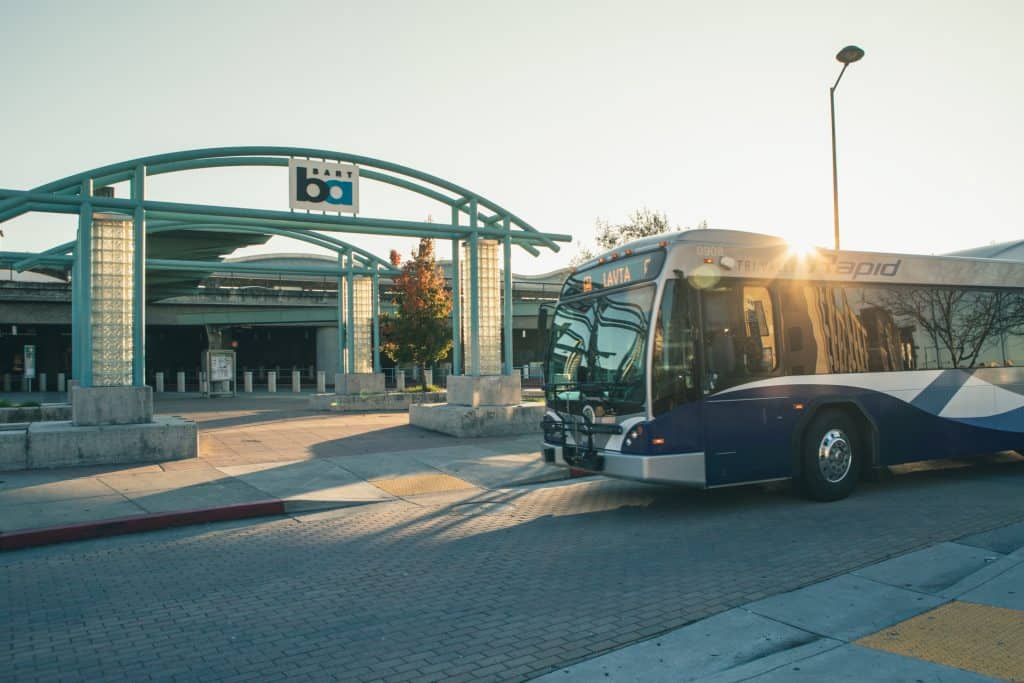
Transit Integration Part 1: Being a Good Neighbor
I live in Contra Costa County and work in Alameda County, and to get to work via transit requires me to take bus rides on two neighboring transit agencies – County Connection and Wheels.
“Talk the talk, walk the walk“. For me, ride the bus. As I approached the San Ramon Transit Center I was relieved to see the County Connection bus already there on layover. I promptly headed to the designated bus bay and waited for my pickup. The minutes clicked by until it was the start time of the trip, but the bus did not move. Maybe he was in the restroom? Maybe he was on a call? Maybe he knew that “Friday light” traffic would mean the bus would be early? When the bus finally heads to my pickup point, my panic subsides. I greeted the bus operator, tapped my Clipper card for the $2 fare, and took my seat. The buses available for my work commute run every 20-40 minutes. Lucky for me, both are timed to connect at their terminus with BART, which means that they often time well with one another to facilitate transferring. A happy scheduling accident for this commuter.
As we drove south through San Ramon, I willed the bus operator to make up for lost time. Thankfully, we got to BART with time to spare – we arrived one minute early. Wheels route 14 was waiting in the bay adjacent to where County Connection dropped me off. A few steps later and I was in my seat on Wheels, ready to roll. But the experience had me thinking: What does meaningful transit integration between two different transit systems look like, especially when buses or trains run late?
Transit Integration Part 2: Enhanced Connectivity
In most parts of the Bay Area, transit agencies do a good job of balancing service designed to address local travel patterns with service designed to serve regional trip purposes. For regional trips, having local, well-time connections to systems like BART and ACE is essential. At LAVTA, we anchor most of our bus schedules to the BART schedule, and everything flows from those designated train arrival or departure times. But when trains or other buses run late, we often operate blindly.
Transit agencies have done an outstanding job communicating real-time information to our riders. What we haven’t figured out (to my knowledge) is how to communicate that same information with other agencies.
Back in the old days, there was a light on the Dublin side of the BART Station mounted on a pole. The light would flash when the BART train was approaching, signaling to the bus drivers that a train was about to arrive. The bus drivers would see that light flash and would wait a few more minutes so that passengers could make their connection. Unfortunately, that light hasn’t worked in years.
We need to lean on the smartest minds to figure out how we can use each other’s real time feeds for transfer-protection decisions. And maybe at the very least, we should fix that light.
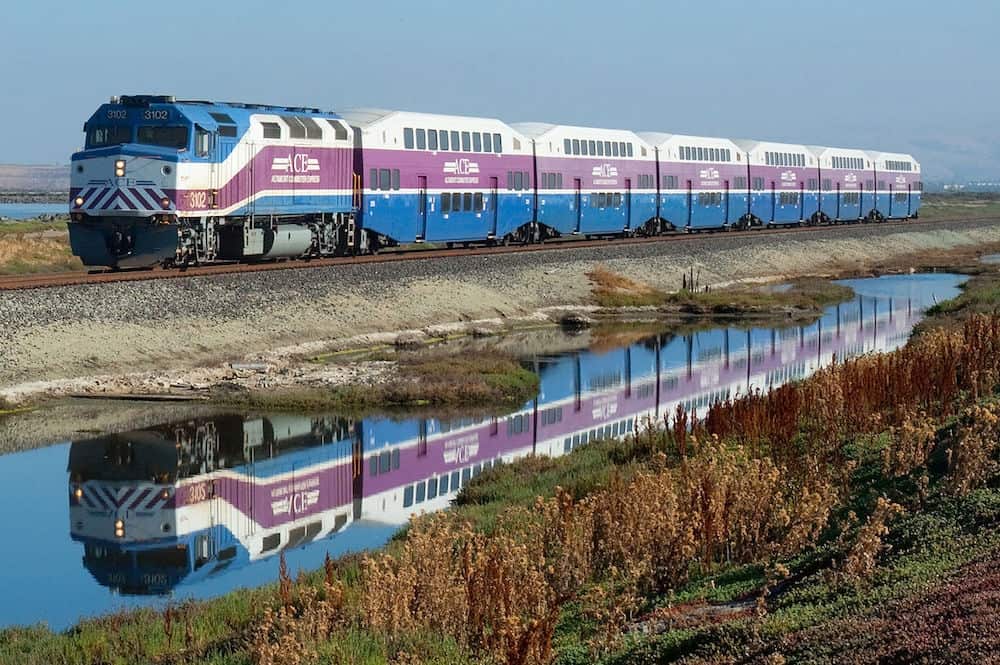
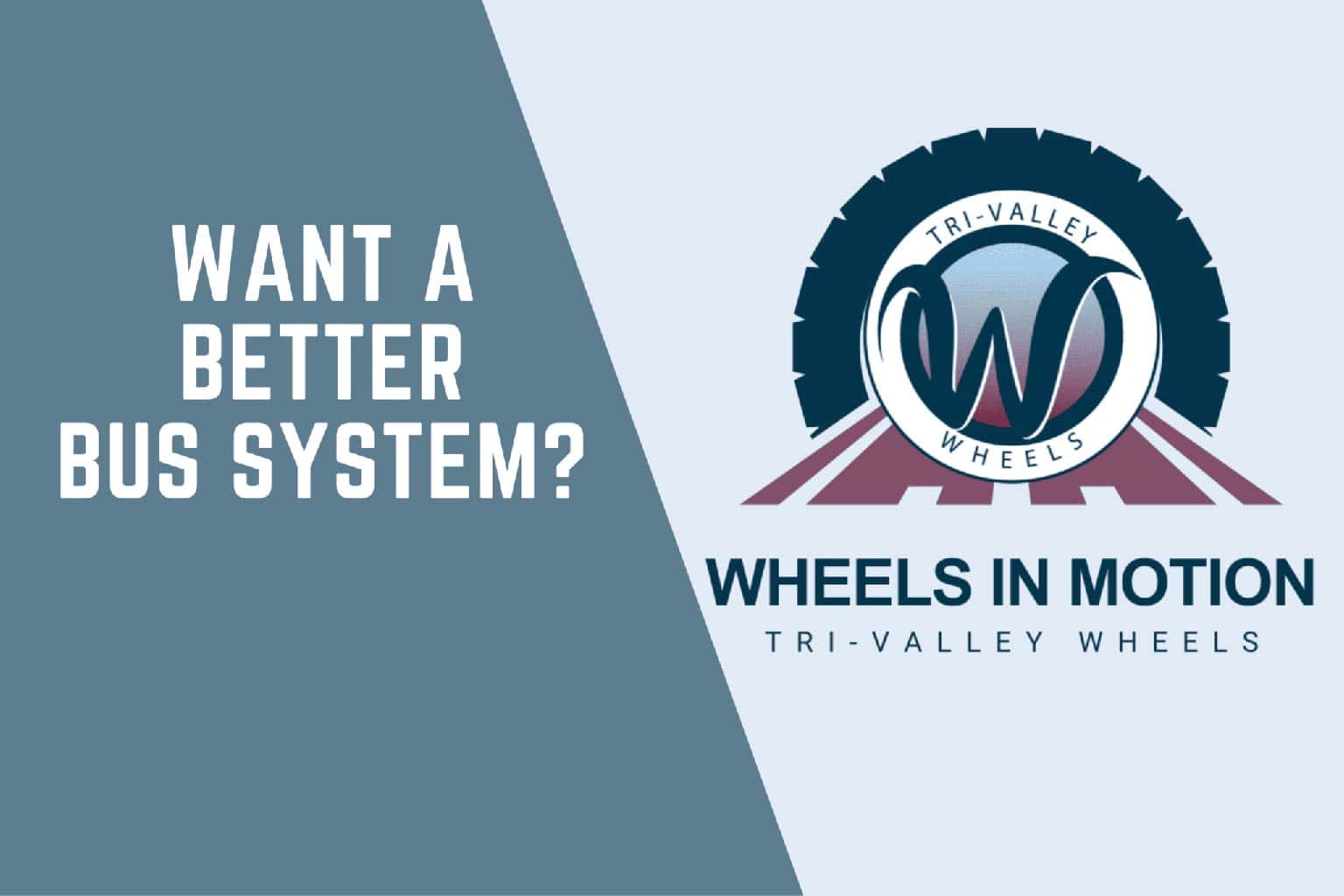
Wheels In Motion Launches New Network
It’s an exciting time to be a Wheels rider! On March 23, 2024, Wheels unveiled a new bus network that offers expanded routes throughout the Tri-Valley, adds more frequent service on weekends, and seamlessly connects with the BART rail system. It was designed in response to rider’s feedback that they preferred Wheels matched the new BART 20-minute train service and add routes in more places. Our new network includes two new routes and the reinstatement of two routes that were suspended in the pandemic. Our new network doubles the amount of service provided by the Rapid bus lines on Saturdays, expanding Tri-Valley mobility seven-days a week.
Try out Wheels with free rides being offered March 23 through April 6. We invite you to take a tour of the Tri-Valley and welcome our new routes to the Wheels Family. Route 4 connects the downtown retail district in central Dublin and both the East and West Dublin/Pleasanton BART stations with residential neighborhoods in north Dublin. Route 4 also travels on Village Parkway and is another option for students going to Dublin High School. Route 18 also made its debut, providing weekday connections to both Granada High School, Mendenhall Middle School and downtown Livermore from residential neighborhoods in southern Livermore. We’re also reintroducing routes that have been suspended since 2020, including Route 11 which operates from the Livermore Transit Center to the Vasco Road ACE Station; Route 580X which connects to BART from central Livermore, with stops at the Airway Park and Ride and at the Wheels administrative office and bus yard.
Zero Emission Bus Transition
Wheels is proud to support California’s climate goals and is doing so by gearing up for our transition to a zero-emissions bus future. As mandated by the California Air Resources Board (CARB), all public transit bus operators are required to be fully zero-emissions by 2040. In 2021, LAVTA’s Board of Directors adopted a visionary zero-emissions bus (ZEB) transition plan which recommended hydrogen fuel-cell technology buses for the future fleet of ZEB vehicles. LAVTA is thrilled to be ahead of the curve and on track to make our first zero-emissions bus purchase later this year. We are working to ensure that we have the appropriate infrastructure in place in order to support the safe operation and maintenance of fuel cell buses.
